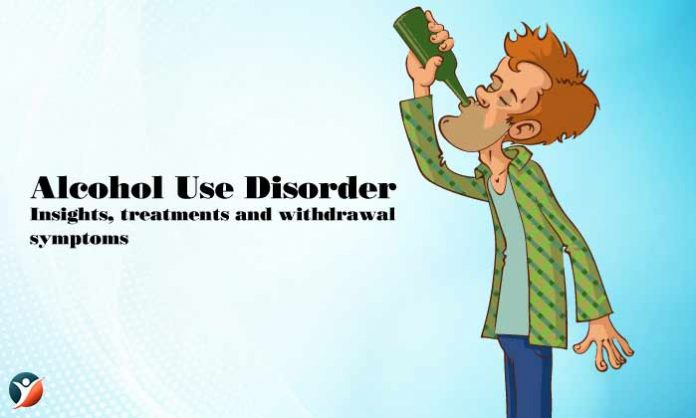
Unhealthy alcohol use may put your health and safety at risk or may lead to various other alcohol-related issues. Binge drinking can also result in significant health risks and social problems. Alcohol use disorder (which is sometimes referred to as alcoholism or alcohol dependence) is extreme alcohol use that involves difficulties in controlling your drinking, being very preoccupied with alcohol, need to drink more amounts to have same effects, or experiencing withdrawal symptoms when you drastically decrease or quit drinking. If your drinking pattern causes repeated harm, distress and difficulties in your daily life, you are likely to have alcohol use disorder (AUD). Fortunately, there are various treatments available to help you easily kick this habit. Read on to know about its insights, withdrawal symptoms and treatments.
Table of Contents
- Alcohol Use Disorder Statistics
- Signs of Alcohol Use Disorder
- What Is Alcohol Withdrawal?
- What Are the Alcohol Withdrawal Symptoms?
- Treating Alcohol Use Disorder (AUD)
- Conclusion
Alcohol Use Disorder Statistics
Approximately 16 million United States citizens have Alcohol Use Disorder. Around 6.2 % or 15.1 million U.S. adults aged 18 and older had this disorder in the year 2015. This number includes 9.8 million males, while 5.3 million were females. Adolescents are also extremely prone to develop Alcohol Use Disorder, and in 2015, around 623,000 adolescents aged 12 to 17 were diagnosed with AUD. [1]
To be diagnosed with Alcohol Use Disorder, individuals should meet a set criteria that is outlined in the Diagnostic and Statistical Manual of Mental Disorders (DSM). Under the current DSM version called DSM–5, anyone satisfying any two out of the 11 criteria during a 12-month period is considered to be suffering from AUD. [2] The severity of this health condition: mild, moderate or severe generally depends upon the number of criteria a person meets.
Alcohol related health issues that particularly result from drinking excessively, drinking too fast, or frequently are among most common public health issues in U.S.
So many people face difficulties in controlling their drinking at some point in time. Every 1 in 10 children have a parent who has a drinking problem. This makes these children more vulnerable to develop AUD in the future.
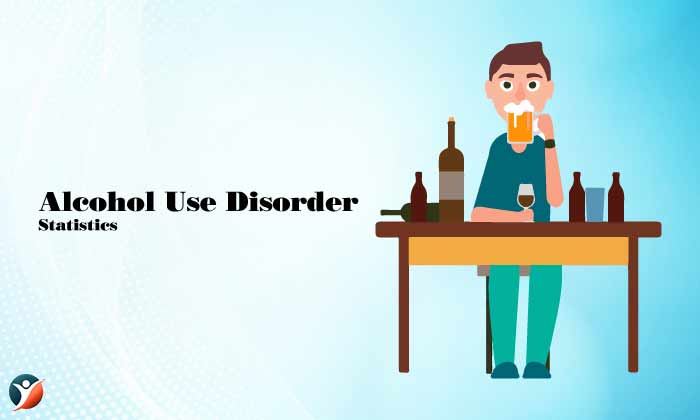
Signs of Alcohol Use Disorder
Alcohol use disorder (AUD) is diagnosed when a person’s drinking habits lead to significant distress or harm in their lives, particularly in work and relationships. This condition may range from being mild to even severe.
Signs and symptoms that indicate Alcohol Use Disorder may include:
• Unable to control the amount of alcohol you consume
• Wishing to cut down on alcohol but failing to do so
• Spending a significant amount of time in drinking, accessing alcohol or recovering from its use
• Feeling a strong urge or craving to drink alcohol
• Failing in fulfilling obligations at your work, home or school due to alcohol use
• Continuing to consume alcohol even when you know it is leading to social, physical or interpersonal problems
• Neglecting or reducing other activities and hobbies for drinking alcohol
• Drinking alcohol in certain situations when it is not at all safe such as driving or swimming
• Developing alcohol tolerance such that you need to consume more alcohol in order to feel the desired effects
• Experiencing classic withdrawal symptoms such as sweating, nausea, alcohol cravings and shaking when you are not drinking or have quit drinking it
If you have experienced any one or more of these symptoms, your drinking is probably a cause of concern. The more of these symptoms you have, the more important is it to seek immediate medical help. A doctor can best diagnose whether you have alcohol use disorder or not.
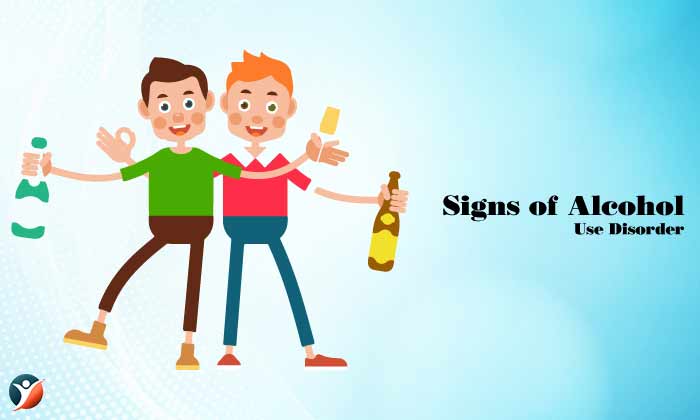
What Is Alcohol Withdrawal?
If you have been drinking alcohol heavily for weeks, months, or even years, you might have both psychological and physical issues when you quit or drastically cut back on the alcohol amount. This is known as alcohol withdrawal. The withdrawal symptoms may range from being mild to extremely serious.
If you drink occasionally, you might not experience any withdrawal symptoms when you quit. But generally if you have experienced alcohol withdrawal symptoms once, you may go through the same again when you quit drinking the next time.
What Are the Alcohol Withdrawal Symptoms?
Alcohol withdrawal symptoms can range from mild to very serious. These symptoms depend on how much alcohol you consumed and for how long.
Mild symptoms generally show up within 6 hours after you had alcohol. These include:
• Anxiety
• Shaky hands or shiver
• Headache
• Nausea
• Vomiting
• Insomnia
• Sweating
More serious health problems can result in hallucinations from around 12 to 24 hours after your last drink to seizures within first two days after you quit. You may visualize, feel, or listen things that are not there.
Hallucinations are not as same as the delirium tremens, or DTs as they are being called. DTs generally start two to three hours after you quit drinking. These include severe symptoms such as vivid hallucinations and unreal delusions. Only around 5% of people experience these symptoms. Those that have them may also have:
• Confusion or Brain fog
• Racing heart
• High blood pressure (hypertension)
• Fever
• Heavy sweating
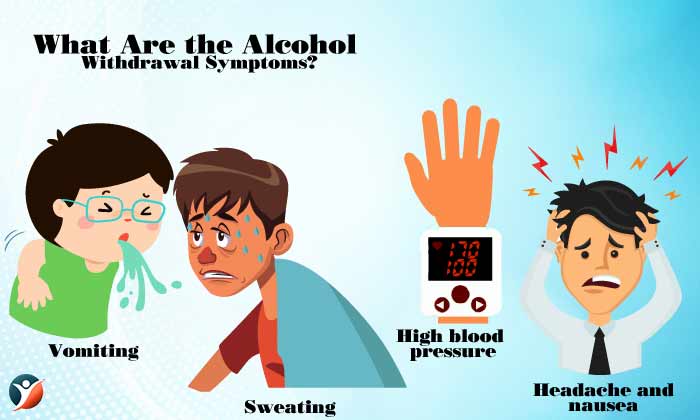
Treating Alcohol Use Disorder (AUD)
No mater how severe your problem might seem, most of the people with alcohol use disorder may be benefited from some sort of treatment.
Research has shown that about one-third of people who seek treatment for alcohol problems have usually very less or zero symptoms one year later. Many people eventually reduce their alcohol quantity and report lesser alcohol-associated problems.
Starting With a Primary Care Doctor:
For anyone who is concerned about treatment, consulting a primary care physician is crucial first step towards their recovery. Your doctor may be a great source for devising a treatment plan and may help you with the most effective medications. A primary care physician may also:
• Evaluate if a person’s drinking pattern is in anyway, risky
• Help devise an effective treatment plan
• Evaluate a patient’s overall health
• Assess if the medications for alcohol would be appropriate
Behavioral Treatments For Alcohol Use Disorder:
Also referred as alcohol counseling, behavioral treatments focus at working closely with a healthcare professional to both identify and help in changing the behaviors which result in heavy drinking. Behavioral treatments have certain common features, which may include the following:
• Developing the required skills that are required to either completely stop or drinking just occasionally.
• Helping building a rather strong social support network
• Working to reach realistic goals
• Avoiding the cues or triggers that may lead to relapse
Types of Behavioral Treatments
• Cognitive Behavioral Therapy (CBT): It generally involves one-on-one session with a doctor or therapist or in small groups. This therapy is usually focused at identifying situations (called “cues”) and feelings that may lead to heavy drinking. It also considers managing stress that might lead to relapse. The primary goal aims at changing the thought processes that leads to excessive alcohol consumption and developing the necessary skills to cope up with day to day situations that trigger binge drinking.
• Motivational Enhancement Therapy: This therapy generally occurs within a short period of time to both build and strengthen a patient’s motivation to make desired changes in their drinking behavior. This therapy focuses on figuring out the pros and cons of seeking treatment, devising an appropriate plan for making these changes, developing confidence, and working upon the required skills.
• Marital and Family Counseling: This therapy involves partners and other close family members in a patient’s treatment process because they can play a crucial role in recovery. Studies have already shown that strong family support help increase the possibilities of maintaining alcohol abstinence (stopping drinking) as compared to patients who are undergoing individual counseling.
• Brief Interventions: These interventions are rather short, one on one or consists smaller groups counseling sessions. The counselor will also provide required information about a patient’s drinking patterns and associated health risks. After receiving the personalized feedback, the counselor can help the person in setting realistic goals and give ideas for making this change easier.
Hence, choosing to get much needed treatment is even more important than the treatment approach used. A treatment approach that includes motivational support, empathy and a strong focus on changing a patient’s drinking behavior.
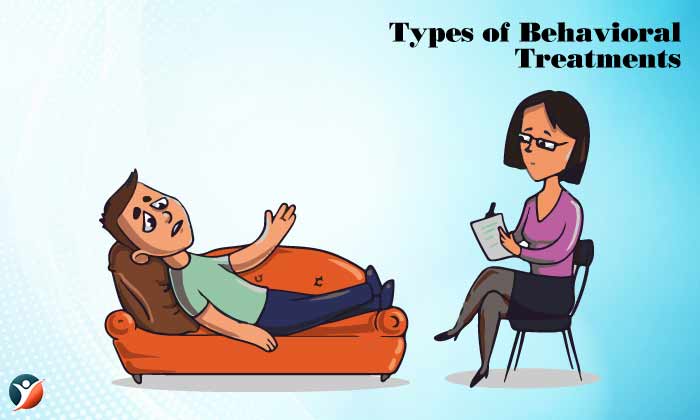
FDA approved Medications for Treating Alcohol Use Disorder:
The U.S. Food and Drug Administration (FDA) has only approved three medications as treatment for alcohol use disorder, while others medications are now being tested to check if they are effective or not.
• Naltrexone: Helps in controlling a person’s drinking.
• Acamprosate: Supports in maintaining alcohol abstinence.
• Disulfiram: This medication blocks the eventual breakdown (metabolism) of alcohol in the body, resulting in certain unpleasant symptoms like nausea and skin flushing. This might make you completely avoid or throw up alcohol.
It is however important to note that not everyone responds similarly to the medications, but for most of the individuals, medications can play a crucial role in overcoming the alcohol dependence.
Scientists are now working to develop lots more pharmaceutical options that could somehow be tailored for individual requirements. As large number of medications will be made available, people might able to try a few medications to figure out which best suits them.
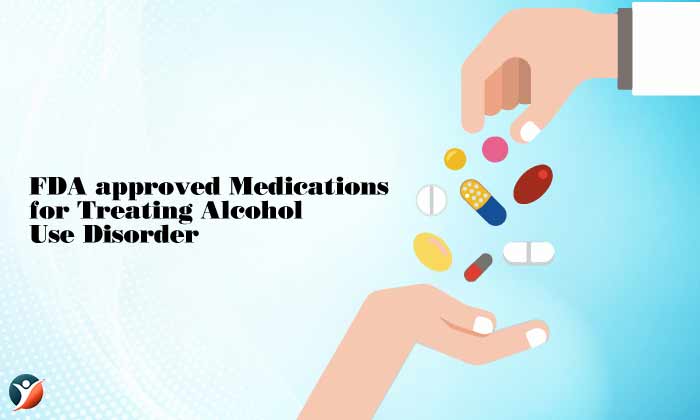
Personalized Medications For Treating AUD:
Generally speaking, health professionals and doctors will be able to figure out which alcoholism treatment is best suitable for each patient. A number of organizations are conducting researches to identify the associated genes and other key factors that may help in predicting how well a person will respond to the treatment. These scientific advances could really optimize how these treatment decisions are taken in the future.
Possible Future Breakthroughs In Treating AUD:
Certain medications that are already approved for various other health conditions have shown positive results in treating alcohol use disorder and excessive drinking:
• An anti-smoking drug known as varenicline can reduce a person’s alcohol consumption and its cravings among people who suffer from AUD.
• Gabapentin, a medication that is used to treat epilepsy and pain conditions, helps in supporting alcohol abstinence and also reduces chances of excessive drinking. People taking this medication have reported lesser alcohol cravings, improvements in mood and sleep.
• The anti-epileptic medication known as topiramate helps people in curbing their problem drinking.
Conclusion
Overcoming alcohol dependency might take a longer time, so you will definitely require an ongoing treatment. Few people who are under the recovery process may relapse and drink again. If you relapse, don’t think that you have failed. This must be considered only phase in the recovery process, and your recovery might get a lot easier. After 5 years, only 1 out of every 7 people with AUD have drinking issues. Treatment works and quite well, you just need to give yourself some time.
Did you enjoy reading our article? Did you follow any of the recommendations given below. Leave your comments and feedback in the comments sections below. Keep checking this space out for more on alcohol use disorder.




